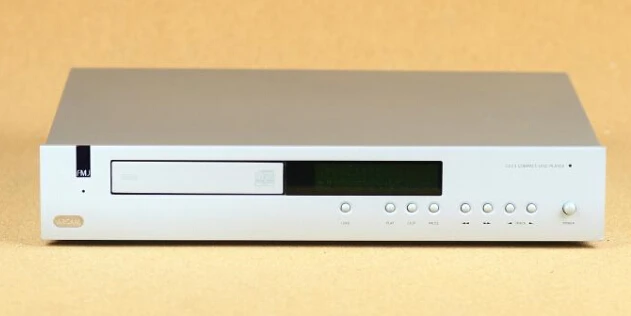Do you remember when CD players were a new thing?
The early Philips-based machines employed 14-bit, four-fold oversampling, while the original Japanese devices used 16-bits. The 164 Philips players arrived in 1986, and by 1988, a slew of 188 machines had arrived from Asia. The Great Bit War appeared to be in full swing, but Philips launched Bitstream in 1989, thereby ending it.
Sony’s CDP-557ESD, on the other hand, was the world’s largest, boldest, fanciest, and most powerful CD player at the time. It had the most bits on the block, with 18kg of alloy castings, copper plating, and over-the-top power transformers, and just in case you didn’t know, the ’18 BIT LINEAR/ 8 TIMES OVERSAMPLING’ legend reminded you every time you glanced at it.
The insides were a textbook example of Japanese digital esoterica, with separate bulky power transformers for the digital and analogue portions, as well as a slew of internal copper plating to decrease electronic noise. Akihabara specialties — the cream of the crop from Tokyo’s electronics Mecca – were used for all discrete components.
With its all-alloy design, rubber dampening, and high-speed linear motor, the Sony CXD1144 mech-based transport assembly was a work of art in and of itself. It reportedly also appeared in Sony’s flagship $4000 CDP-R1 transport. The combination of two Burr Brown PCM64P DAC chips yielded ’18-bit resolution,’ and when combined with an eightfold oversampling digital filter, the result was a sound as bouncy as a children’s inflatable castle.
Whatever music you feed it, this Sony sledgehammers its way through it. Give it some bluff eighties power pop, and you’ll find yourself in the front of the crowd, head pressed against the PA stacks. When you add a soothing slice of jazz fusion to the mix, you’ll find yourself at the front of the crowd, your head pressed against the PA stacks.
This isn’t a player who plays by the rules. Instead, it artificially enhances everything with a caffeine and ginseng combination, making it sound bigger, faster, brighter, and louder.
Listening to the Sony brings to mind hi-fi from two decades ago. It’s rough by today’s standards, lacking in delicacy and even-handedness even when compared to an affordable Cambridge Audio. The treble is splashy and ragged, with a hint of digital hash, and the upper mid is brightly lighted but not harsh.
Despite this, it has an appealing love of music that makes modern exotica seem overly polite and uninterested. And don’t believe anyone who tells you that all transporters sound the same when it comes to bass. All high-end Sony players contain systems that appear to extract an additional octave of low frequencies from any Compact Disc. It’s one giant grin from start to finish, thanks to multi-penchant bit’s for playing tracks at subterranean frequencies.
The ‘557ES received mostly lukewarm reviews back in 1989, which is understandable given that most reviewers at the time were still using forward-sounding Naim amps that weren’t exactly a perfect match. However, if you pair it with a better-balanced system that includes neutral interconnects, a good isolation platform, and the correct speakers, you’ll have a blast.
There are still plenty available under $500 today, and they’ll last a lifetime thanks to the Lexus build quality. They also respond well to tinkering – Trichord’s Clock 3 improved the tightness and dynamic of our sample. Bitstream had reached the world’s top players by 1990, and the fun was no longer there. Old eighties bruisers like Sony’s CDP-557ESD have never been bettered in one essential regard.






